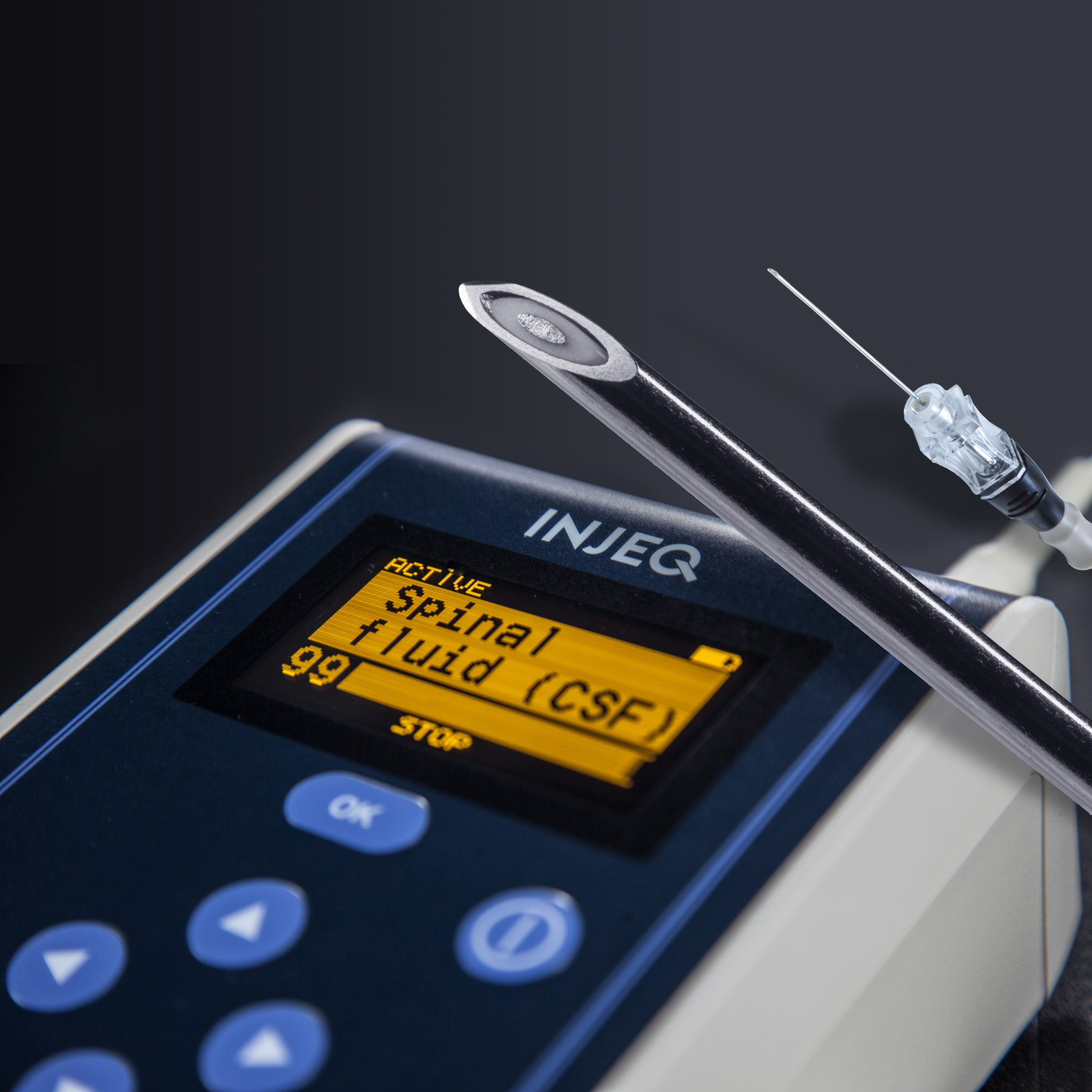Post-dural puncturel headache after lumbar puncture is a difficult post-procedure complication caused by cerebrospinal fluid seeping through the lumbar puncture canal opening into surrounding tissues, which decreases the pressure in the cerebrospinal fluid space and stretches the patient’s meninges in connection with posture changes. The pain worsens when sitting up or upright, is felt on the forehead or behind the eyes, and may be accompanied by nausea, sensitivity to sound or light, or neck stiffness. Cerebrospinal fluid leakage may also cause hearing and vision problems. Without treatment, the headache can last up to a couple of weeks. If bed rest, hydration and oral painkillers do not help, the patient can have a blood patch in the lumbar puncture area. For the blood site, the anesthesiologist injects the patient’s own blood into the epidural space. At that time, the pressure and clot that forms in the epidural space ease the symptoms. After lumbar puncture, a blood patch injected within 48 hours helps to up to 90% of patients.
According to the statistics of the Finnish Institute for Health and Welfare for 2010–2020, approximately 4927 lumbar punctures were performed annually on average in Finland. Based on the incidence rates presented in the research articles, it is estimated that 1182 patients may develop a post-dural puncture headache each year. When these procedures are performed with the Injeq IQ-TipR system, which reduces the incidence of headaches to six percent (6%), we avoid an average of 886 additional headache complications after a lumbar puncture per year.
The average price of lumbar puncture procedures in Finnish university hospitals is EUR 435. Performing the procedure with the Injeq IQ-TipR system will incur an additional cost of approximately 70 euros, i.e. the price will be 505 euros. The average cost of a blood patch procedure is EUR 532. For society, a day of treatment in a hospital costs 688 euros and a sick day about 350 euros. Some patients with headache complications need a repeated blood patch procedure to treat the condition, and recovery from this procedure also takes time.
The calculation is using the following prices in Finnish University Hospitals:
| Helsinki | Tampere | Turku | Kuopio | Oulu | Aver. | Annually | Diff. | ||
| LP conventional needle | 327 | 515 | 580 | 319 | 435 | 2 144 477 | |||
| LP IQ-Tip device | 397 | 585 | 650 | 389 | 505 | 2 489 367 | 344890 | ||
| Epidural blood patch | 594 | 550 | 580 | 164 | 776 | 533 | 629 770 | ||
| Treatment day | 688 | 688 | 813 216 | ||||||
| Day on sick leave | 350 | 413 700 |
In total LPs/year 4927
In total PDPH cases/year 1182
Based on these figures, lumbar punctures cost approximately EUR 2.1 million in Finland. If we calculate that a lumbar puncture with Injeq IQ-TipR system costs 70 euros and add this to the costs of just under 400,000 euros, the current costs still fall as complications are significantly reduced. Computationally, headache cases alone would be reduced from 1182 to 296.
Such a very rough calculation ignores the patient’s experience. The doctor who performed the procedure should always be informed of headaches, but because the treatment can be done in a different hospital, the information does not always reach him/her. People who have often had headaches say that the unpleasant pains came as a surprise and they did not even know how to seek help for them immediately. Perhaps even worse for the patient is the avoidance or prolongation of lumbar puncture procedures for fear of complications in situations where it would be absolutely essential for correct and rapid diagnosis and access to treatment. The introduction of technology is natural for young doctors, and they are used to using new clinical tools. When using the Injeq IQ-TipR system, lumbar puncture can be performed immediately by the doctor on duty in the emergency room, without the need to call an anesthesiologist. This shortens care chains, improves the quality of care and saves time and money. Sometimes human lives are also lost when meningitis in a child is diagnosed in time.
Hospitals continuously develop and monitor their own adverse event registers, based on which the aim is to improve the safety and efficiency of operations. By reducing complications and targeting the right treatment measures and treatment methods, the effectiveness of treatment can increase – in other words, patients are treated better and resources are used more efficiently from the perspective of both the individual and society. The effectiveness of patient care has been named as a key part of the strategy of university hospitals.
The calculation is based on the following research articles:
Arevalo‐Rodriguez, I., et al. (2017). Needle gauge and tip designs for preventing post‐dural puncture headache (PDPH). Cochrane Database of Systematic Reviews, (4). This research article shows 24% incidence of PDPH when a lumbar puncture is done using 22G needle.
Långström, S., et al. (2022). Bioimpedance spinal needle provides high success and low complication rate in lumbar punctures of pediatric patients with acute lymphoblastic leukemia. Scientific Reports, 12(1), 6799. This research article shows 6% PDPH incidence when lumbar puncture is done using 22G needle IQ-Tip system.




